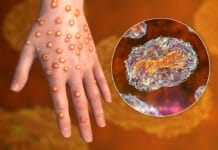The ketogenic diet has many devotees beyond the original intent of a controlled nutritional response to pediatric epilepsy. Dental hygienists have an in-depth understanding of nutrition’s pivotal role in oral health and disease. Unexplained gingival inflammation can be rooted in what our patients consume daily and can be a small indication of a larger inflammatory issue in the body.
The ketogenic diet is a very low-carbohydrate, high-fat diet that promotes ketosis in the body. The proportions of this diet are generally 60-80% fats, 20-30% proteins, and 5-10% carbohydrates.1
In 1921, it was observed that ketones, acetone, and beta-hydroxybutyric acid appeared with starvation or diets low in carbohydrates and high in fat in healthy adults. The ketogenic diet mimics the metabolism of fasting and is as effective, but patients can safely maintain the diet for longer periods.1 This diet initially gained popularity after showing promise in decreasing the severity and frequency of seizures in epileptic patients before anti-epileptic medications were available.2
The ketogenic diet reduces or restricts carbohydrate intake, so the body begins to burn fat in place of glucose. When the body makes that change in fuel for energy, you are in ketosis. Ketosis produces three types of ketones that are byproducts of fat: acetoacetate, beta-hydroxybutyrate, and acetone.2
Acetone Release
One negative oral effect of the ketogenic diet patients may experience is halitosis. Over 50% of the general U.S. population experience halitosis, which is formed by volatile molecules that can be caused by pathological or non-pathological issues and may originate from an oral or non-oral source.3 One of the ketones produced with the ketogenic diet, acetone, cannot be used for energy storage, so it is released from the body from the lungs or by urination. Acetone is the cause of a sweet or fruity oral odor in those with ketoacidosis.2
Good oral hygiene is the most important first step to combat this side effect. Encourage regular brushing, interdental cleaning, and tongue scrapers. Since halitosis originates from the lungs, suggesting chewing gum, recommending patients drink water throughout the day, or adding herbs such as clove, mint, or cinnamon to their diet may be helpful.2
Some will become “keto-adapted,” and the halitosis may subside even with the continuation of the diet. If not, you might suggest reintroducing complex carbohydrates like whole grains or leafy green vegetables to their diet. Ketosis can become dangerous for some, and patients should always keep their physician aware of nutritional changes.2
The Benefit of Reducing Carbs
If you can handle a little halitosis, the ketogenic diet has benefits that might help patients improve their oral health. Carbohydrates provide bacteria that produce acid and plaque in the mouth, encouraging biofilm implantation, colonization, and metabolic activity.4
Limiting carbohydrates limits acid erosion of the teeth. Excessive carbohydrates promote microbial imbalance and chronic inflammation in the body. High glucose levels promote apoptosis and inhibit the proliferation of periodontal ligament cells. Research has shown that a low-carbohydrate, low-sugar diet can lower calculus formation, caries, and gingivitis by more than 50% without changing normal oral hygiene habits.4
In 2009, a study was conducted with ten participants to assess the effects of a Stone Age diet on oral health. This diet is also known as the paleo diet, another trend that encourages low-carb consumption but is less restrictive than the ketogenic diet. Over four weeks, participants were not allowed access to traditional oral hygiene methods and showed an increase in plaque formation. However, they also showed an improvement in mean bleeding on probing from 34.8% to 12.6% and a mean average improvement in pocket depths of 0.2mm. Researchers concluded this was due to the absence of refined sugars from their diet during the study.5
In Closing
The benefit of a diet low in carbohydrates and high in omega-3 fatty acids is that it reduces overall inflammation and the risk of chronic disease, which might be worth a try for some. Each person is different, though. Dental hygienists are in a prime position to help identify possible nutritional imbalances related to chronic inflammation in the oral tissues and throughout the body. It is always important to refer patients to their primary care physician to discuss how dietary changes might affect their health.
By staying current on the latest trends in nutrition and diet, dental hygienists have a unique opportunity to help patients understand how these trends can affect their oral and overall health.
Before you leave, check out the Today’s RDH self-study CE courses. All courses are peer-reviewed and non-sponsored to focus solely on pure education. Click here now.
Listen to the Today’s RDH Dental Hygiene Podcast Below:
References
- Wheless, J.W. History of the Ketogenic Diet. Epilepsia. 2008; 23(S8): 3-5. https://onlinelibrary.wiley.com/doi/full/10.1111/j.1528-1167.2008.01821.x
- Devkota, B.P. (2021, November 3). Ketones. Medscape. https://emedicine.medscape.com/article/2087982-overview
- Aylıkcı, B.U., Colak, H. Halitosis: From Diagnosis to Management. Journal of Natural Science, Biology, and Medicine. 2013; 4(1): 14-23. https://www.ncbi.nlm.nih.gov/pmc/articles/PMC3633265/
- Woelber, J.P., Bremer, K., Vach, K. et al. An Oral Health Optimized Diet Can Reduce Gingival and Periodontal Inflammation in Humans – A Randomized Controlled Pilot Study. BMC Oral Health. 2017; 17: 28. https://bmcoralhealth.biomedcentral.com/articles/10.1186/s12903-016-0257-1
- Baumgartner, S., Imfeld, T., Schicht, O., et al. The Impact of the Stone Age Diet on Gingival Conditions in the Absence of Oral Hygiene. Journal of Periodontology. 2009; 80(5): 759-768. https://aap.onlinelibrary.wiley.com/doi/full/10.1902/jop.2009.080376











